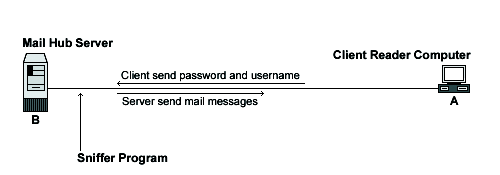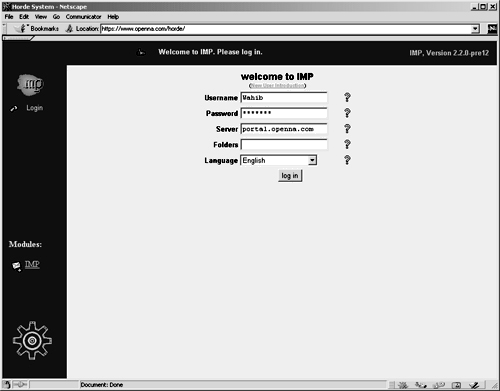Tcp-wrappers take cares to start and stop IMAP or POP server. Upon execution, inetd reads its configuration information from a configuration file which, by
default, is /etc/inetd.conf. There must be an entry for each field of the configuration file, with entries for each field separated by a tab or a space.
Edit the
inetd.conffile, vi/etc/inetd.confand add or uncomment the line related to the service you want to enable. If you want to use IMAP then uncomment the line related to it, if is POP that you want to use in your server, then uncomment it instead of IMAP. In our example below we'll use IMAP service.#pop-2 stream tcp nowait root /usr/sbin/tcpd ipop2d #pop-3 stream tcp nowait root /usr/sbin/tcpd ipop3d imap stream tcp nowait root /usr/sbin/tcpd imapdDon't forget to update your
inetd.conffile by sending aSIGHUPsignal killall -HUP inetd after adding or uncommenting the corresponding line.[root@deep /root]# killall -HUP inetdIf the IMAP/POP server you want to install is a private and limited server for wheel knows real IP address clients, you can use the security feature of tcp-wrappers to control, which can connect, to your server and from where. If you intended to offer mail service to a dial-up clients or a Webmail service for example, then you cannot use this feature. Edit the
hosts.denyfile, vi/etc/hosts.denyand add the line:ALL: ALL@ALL, PARANOIDWhich means all services, all locations, so any service not explicitly allowed is then blocked, unless they are permitted access by entries in the
hosts.allowfile.Edit the
hosts.allowfile, vi/etc/hosts.allowand add the line:imapd: 216.209.228.34 my.domain.comWhich mean only client IP
216.209.228.34with host namemy.domain.comis allowed to connect and use IMAP service on the server.
With WebMail IMP, communications from the mail server through to the client machine are encrypted with the SSL protocol using a web browser.
Further documentation, for more details, there are several man pages you can read:
- imapd(8C)
- Internet Message Access Protocol server
- ipopd(8C)
- Post Office Protocol server

